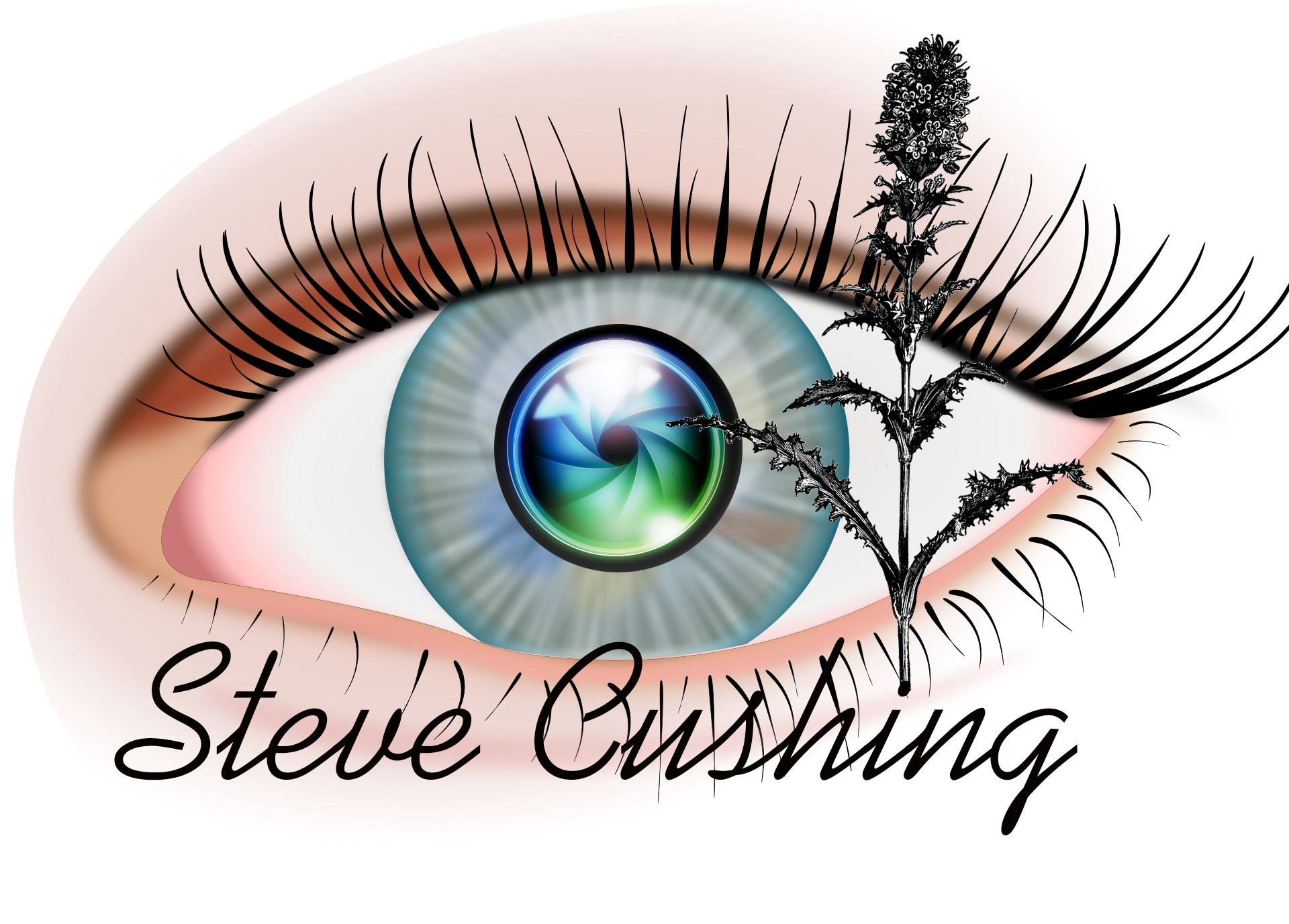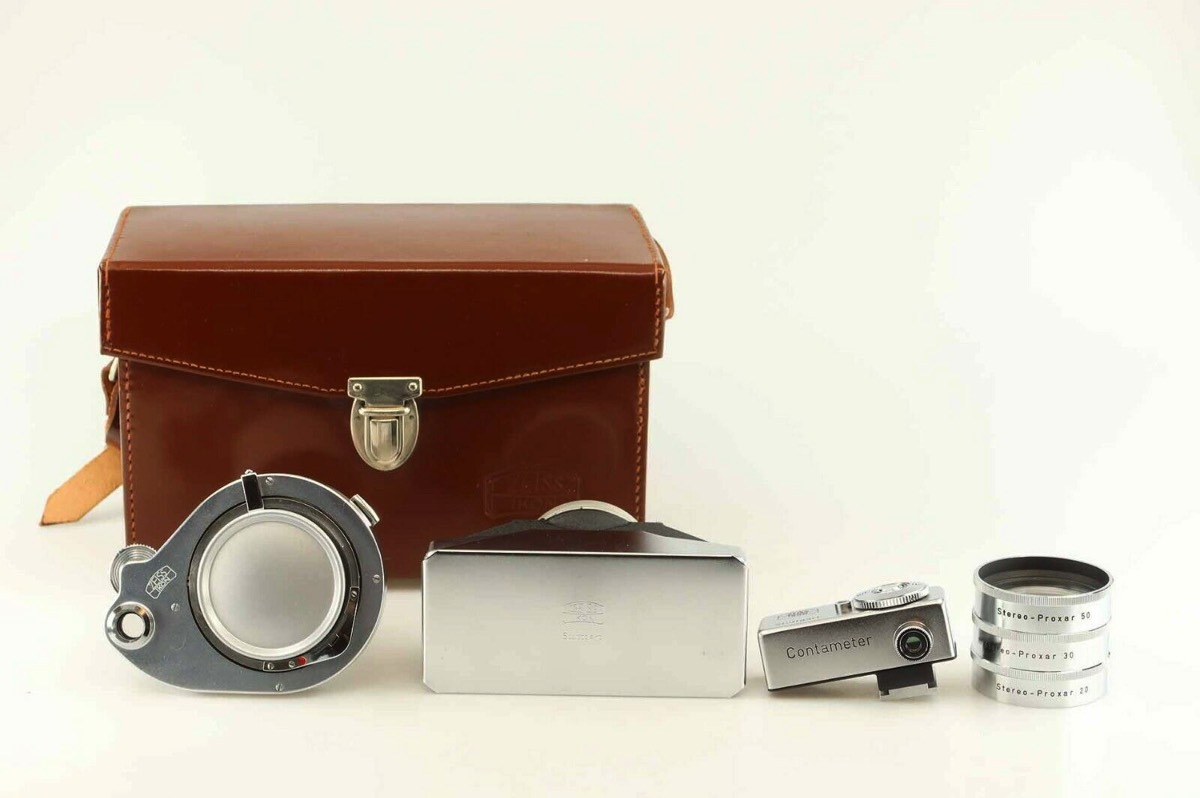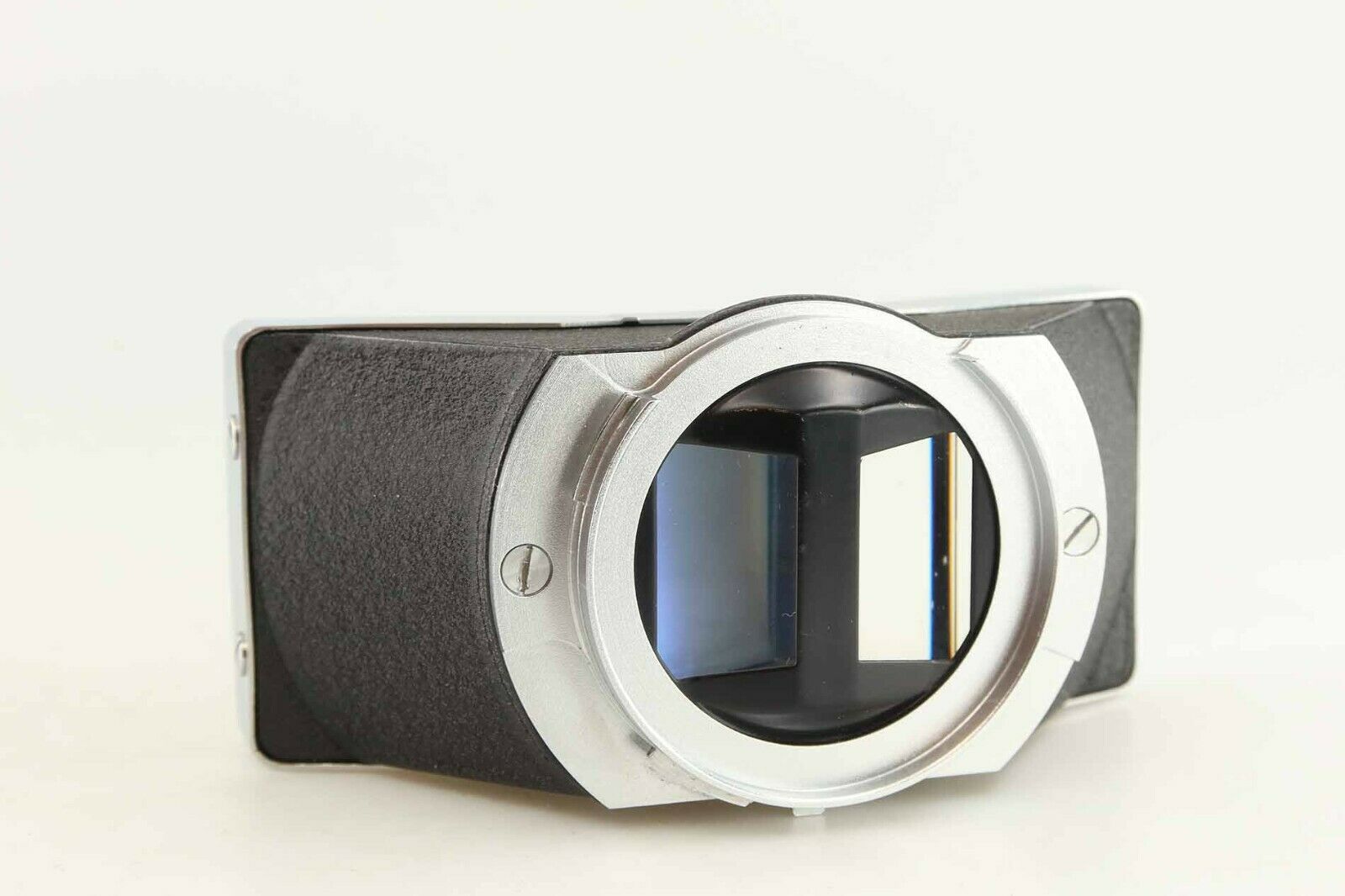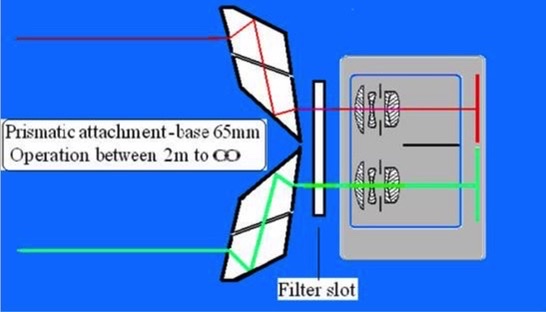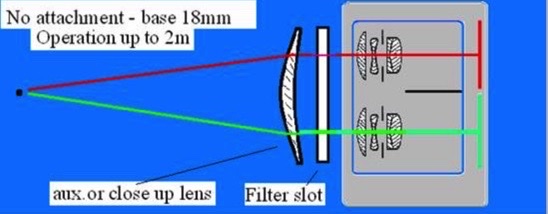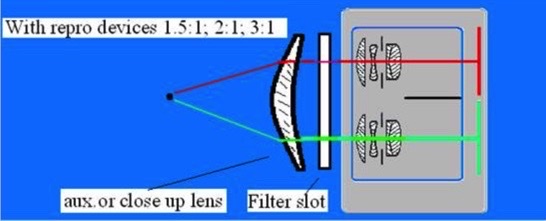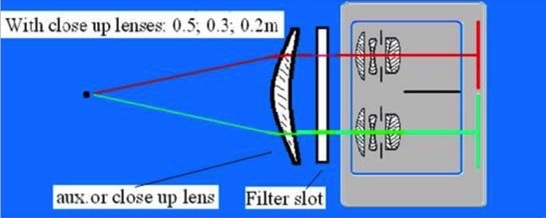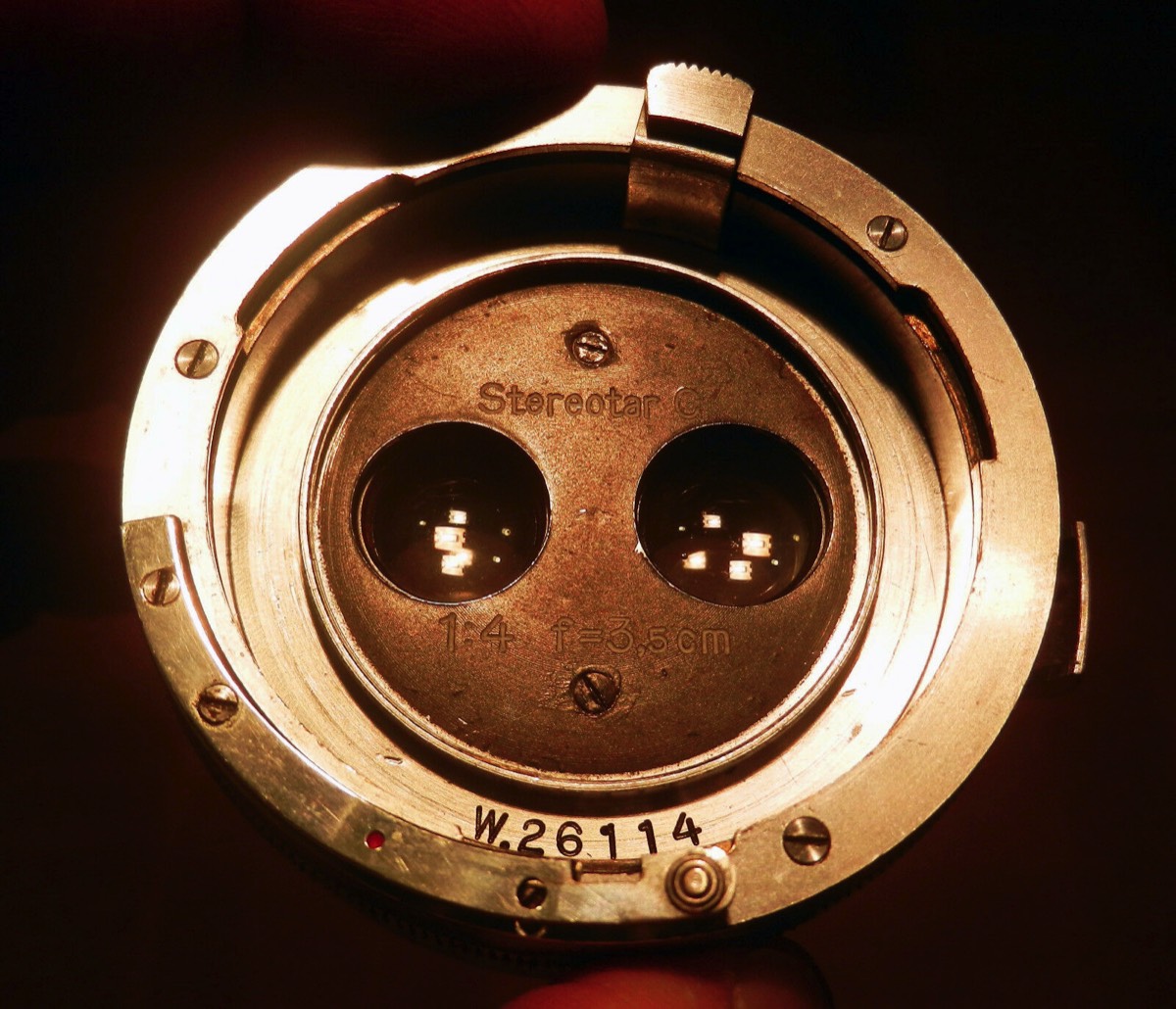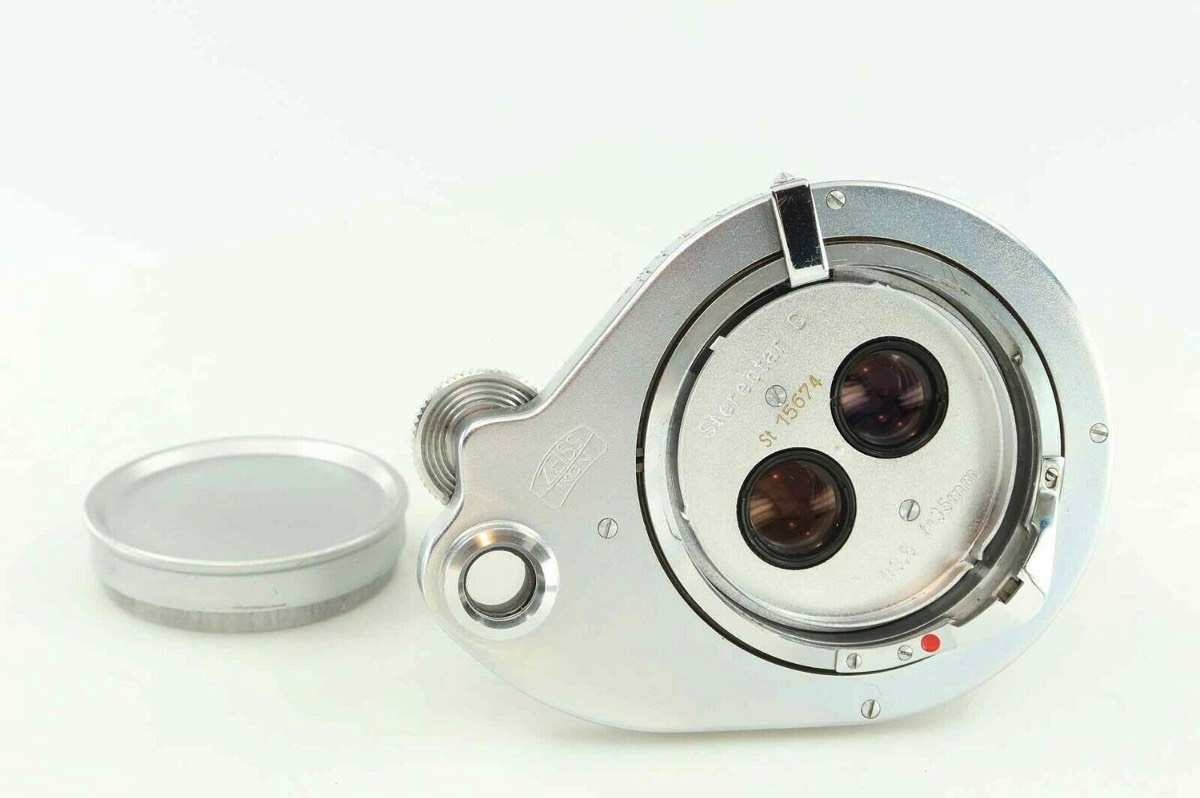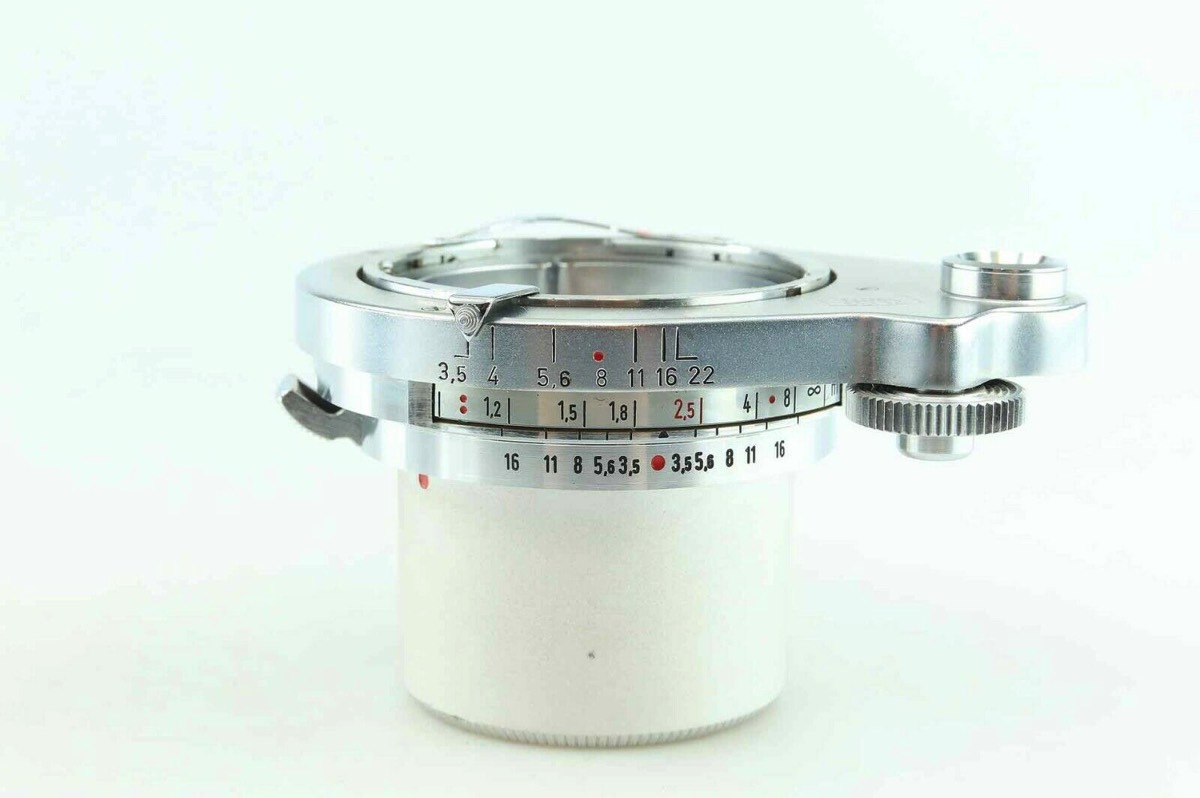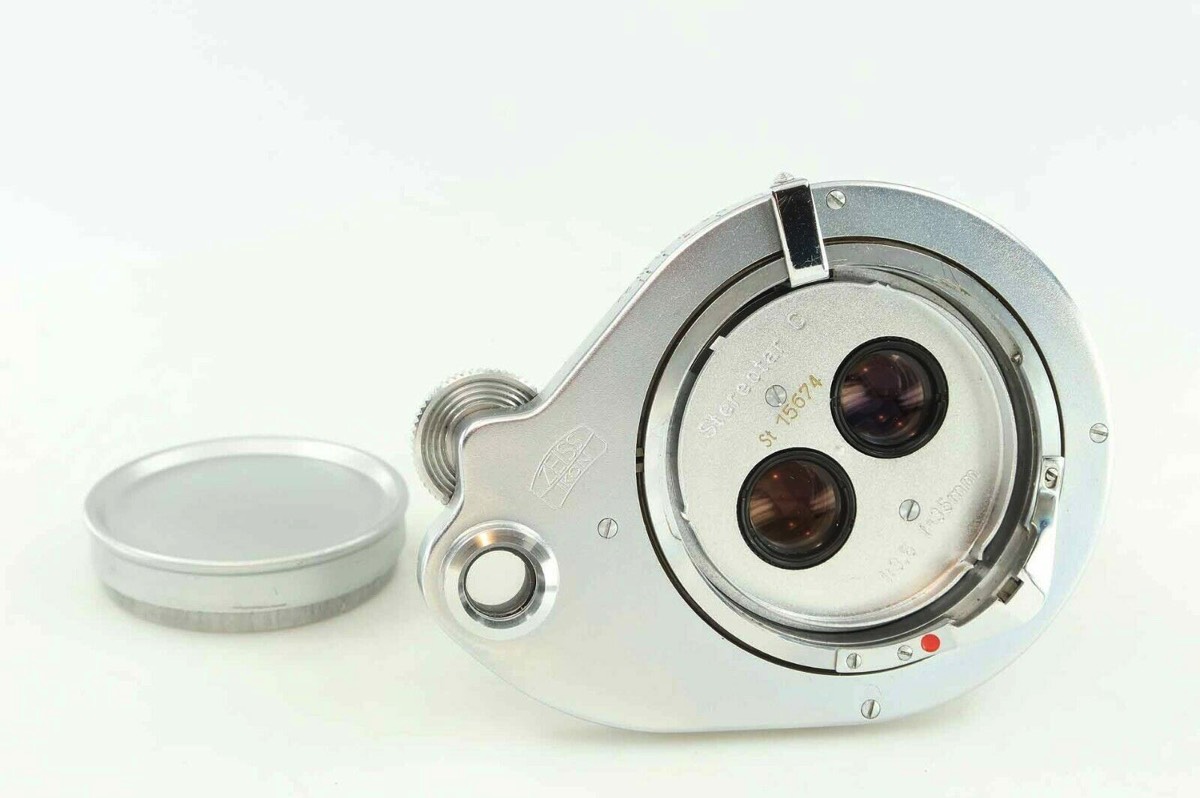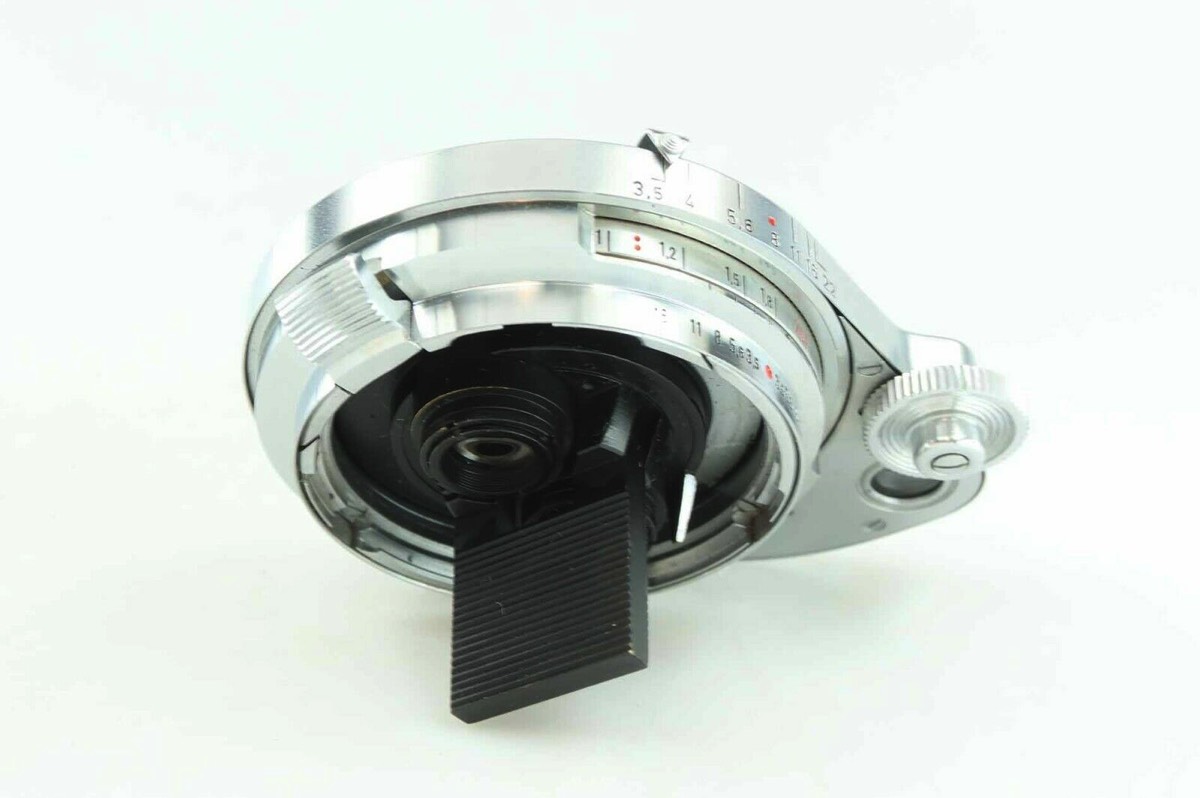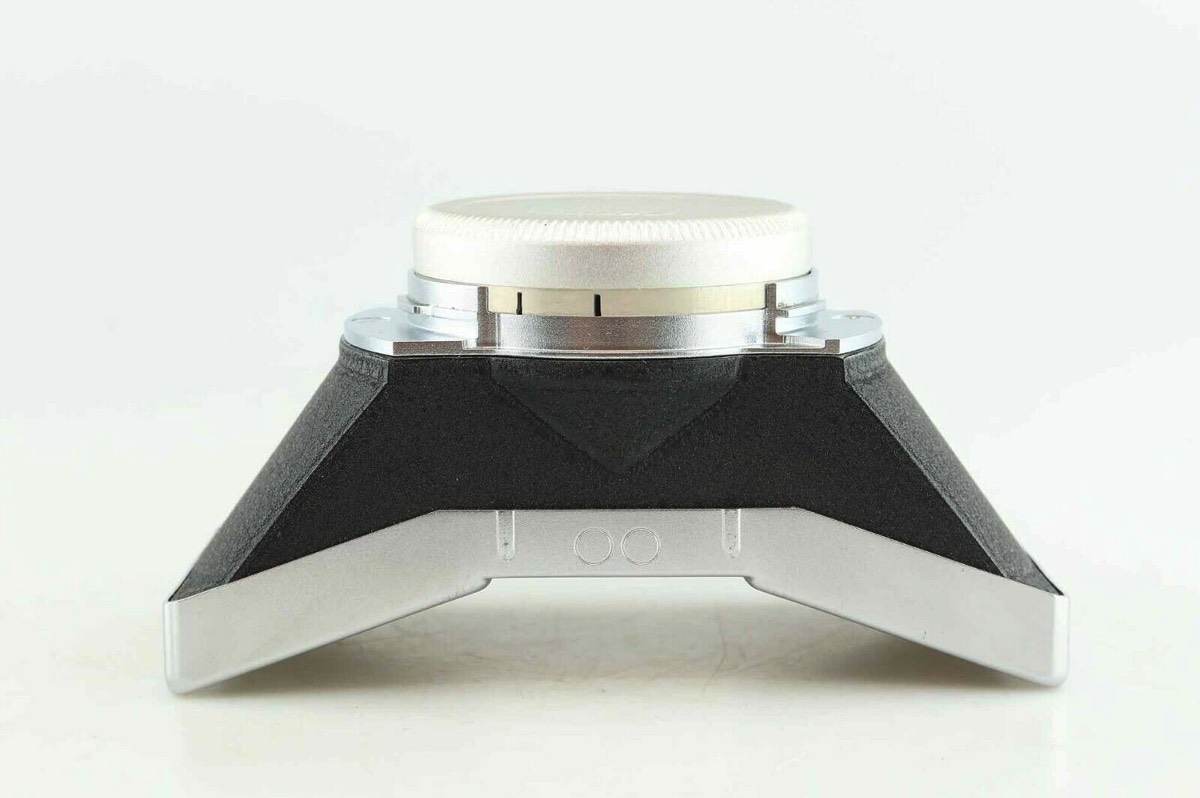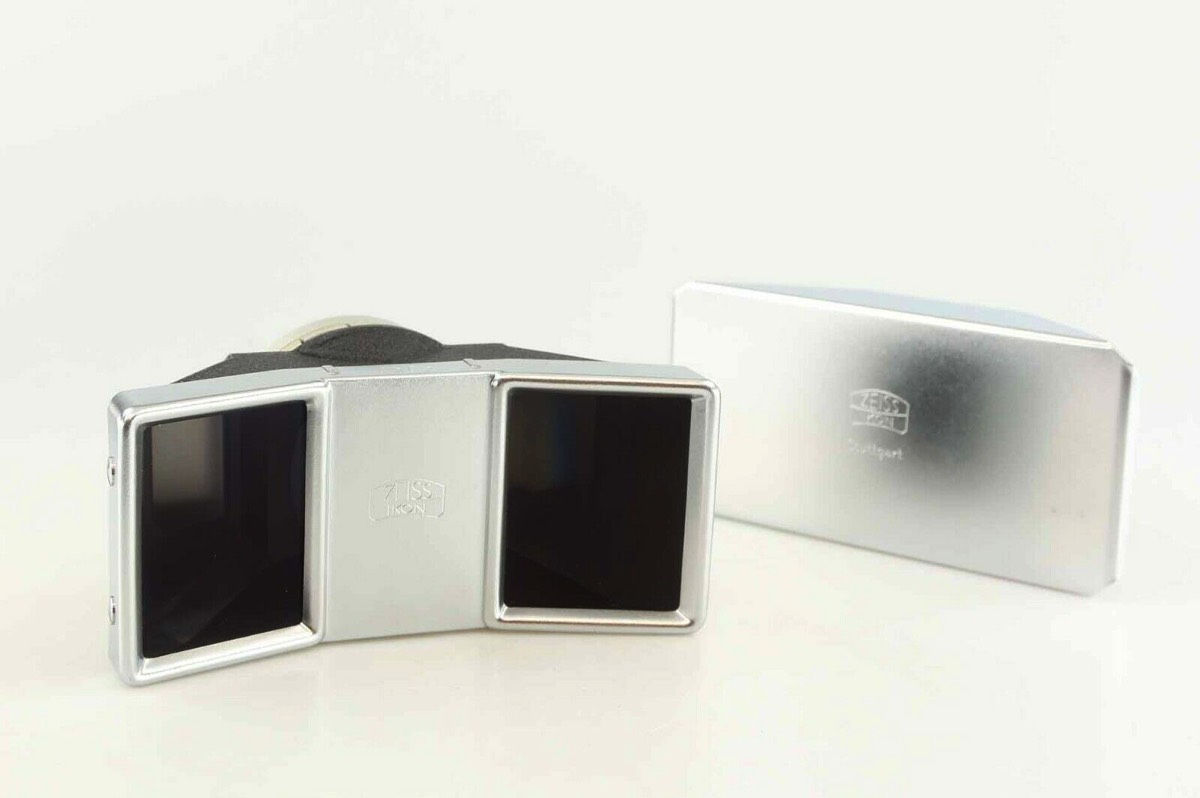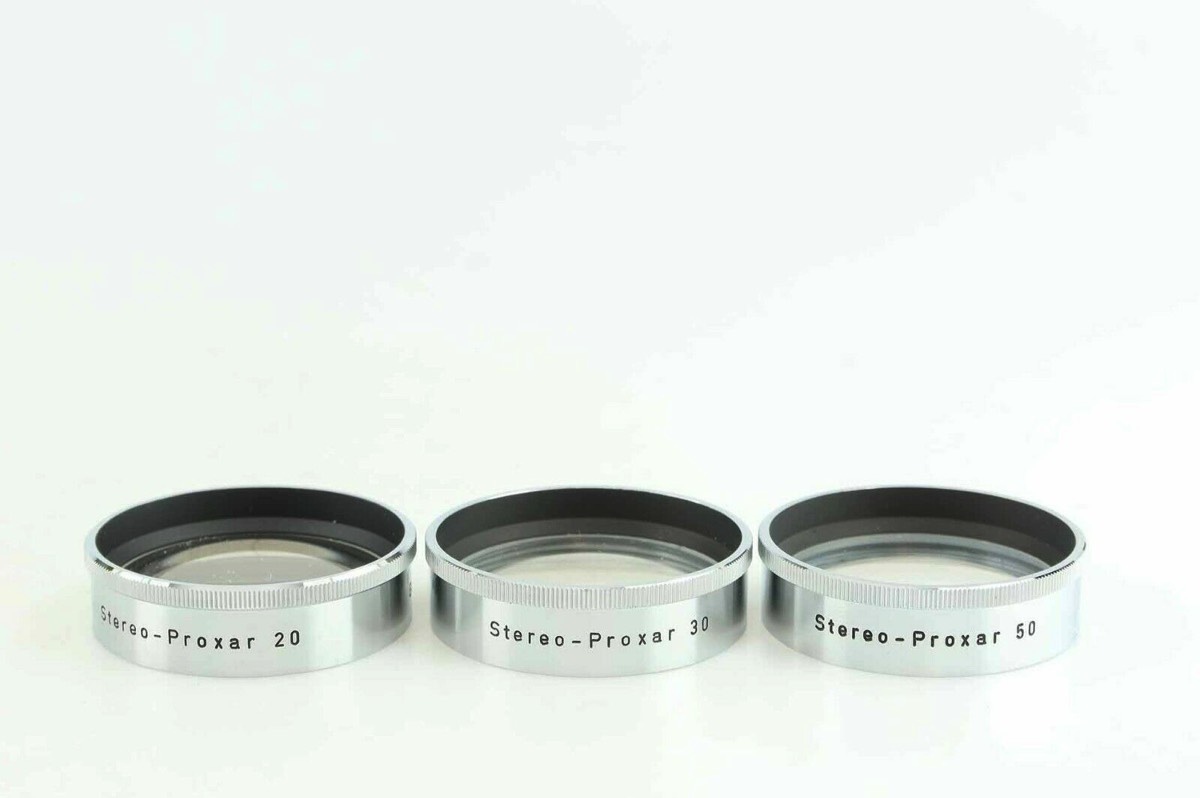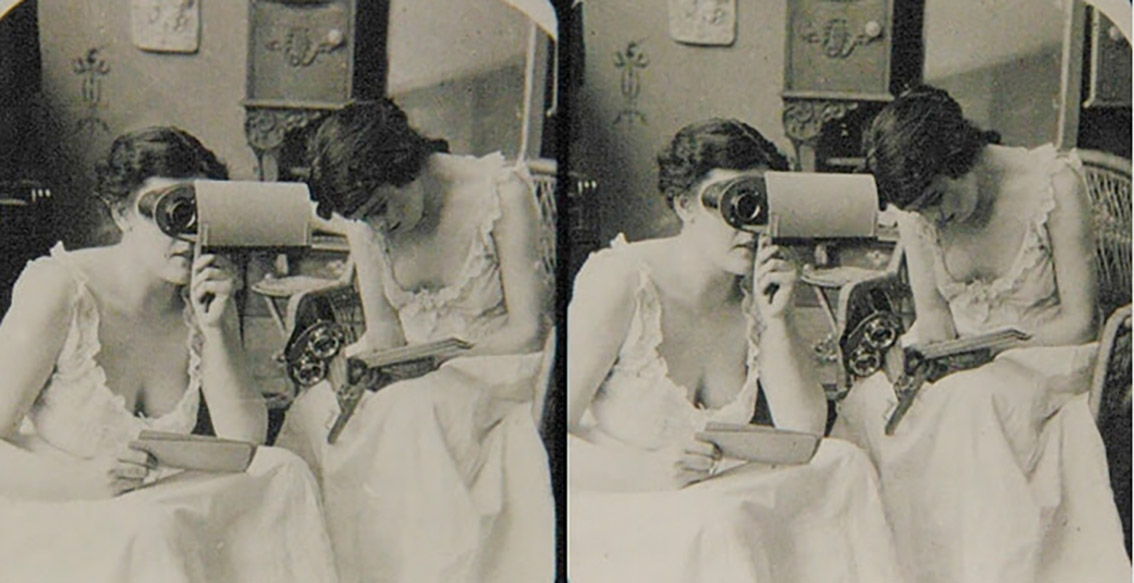Zeiss STEREOTAR C CONTAX 3D 35mm f3.5
It is spring 1938: Two years after the launch of Contax II. Already in full production, with the newly released Contax III and Zeiss IKON launches this scene-taking lens to capture in 3 dimensions for use on the Contax system. Unlike the paths taken so far using special two lens cameras the company create an adapter for stereoscopy on a standard single lens camersa. Zeiss IKON called this a STEREOSCOPIC TRANSFORMER set and it was built specifically for their Contax cameras. It included a series of sub accessories designed to adapt the product for all uses.
Undoubtedly, this accessory, was then, and still is now admired and revered by collectors. It is so unique. Only one other manufacturer decided to follow this route and that was Leica. The lens had as its primary function, in addition to supplying photographic needs as well as many other products of this brand, a primary aim to spread German supremacy among other nations.
It should be noted that this equipment was intended for the exclusive use of the Contax brand without immediate possibilities for use in other brands; for this reason, despite being built by Zeiss Jena (1938-1940) and later by Zeiss Oberkochen (1954-1956), it always carried the Zeiss IKON brand.
The Zeiss STEREOTAR C CONTAX 3D 35mm f3.5 was therefor ONLY sold as a kit for Contax cameras.
Not used for quite a few years due to the DSLR film plane distance, it is now possible to use the system on a mirrorless full frame camera. There are two versions the pre war f4 version and this post war f3.5 version. After the war Zeiss redesigned the Stereotar for the Contax, and in 1952 released the 3.5 version. This review is of the 1952 version.
The unit adds two separate lenses in the space of a single lens. I believe them to be triplets but cannot find any information on this. Each lens has its own diaphragm. The two lenses produce two 18 x 24mm half frame images (useful area 16 X 22.5mm) on the single full frame plane. This was designed this way to enable the use a standard film with a full 35mm frame of 24 x 36mm so that the user could mix stereo and standard images on a standard roll of film. As the two lenses have a 35mm focal length, the two together give a standard 50mm field of view.
It was provided with a prism for distances over 2 meters, providing the greater stereo separation needed. It also came with a separate viewfinder and a Contameter close up set.
There were also accessory close up lenses mounted to a frame to define the focus and frame. They were available in lengths of 6, 9 and 13cm.
Looking at a 1960 dealer catalog, I find it interesting to note that the Stereotar was sold with the beamsplitter for $164 (although they were also offered separately for $125 and $39 respectively). The viewfinder ($10), the Contameter rangefinder (without Proxars, $66), the Proxars ($16.50 each) and the case ($29) were all sold separately. So if you have an outfit that is incomplete, pieces may not have been lost, but rather never purchased originally.
Only 1200 of these were made in two batches, serial numbers St12201 to St12700 and St15001 to St15700. This is still an expensive and desirable addition to any collection.
The past and pre way are largely the same although the pre-war version does not have the focusing wheel as on the post war version.
The main unit has two lenses each with their own diaphragm that are controlled by a single unit.
The septum between the two lenses protrudes a very long way (20mm) into the body and moves forwards and backwards when you turn the focus knob, on my Canon it almost touches the shutter film gate but the lens is slightly closer than needed for infinity due to my hand made adapter and I did not wish to completely recalibrate this just for this lens. This lens will thus fit most full frame cameras but you would need to cut the septum to use this lens on a non-full framed camera. The septum is made of brass so this is easy to do, just carefully file down the septum bit by bit until it fits just be careful when trying it on the camera to ensure that you do not damage the shutter. I had to do this on another unit to fit a converted full spectrum Canon M and the lens works fine.
When the Stereotar is mounted, to get the best stereo effect the line joining the two lens axes has to be exactly parallel with the line of the film. On a Contax body the outer bayonet mount achieved that automatically. Providing the adapter is aligned correctly it will work fine but ensuring that the camera is horizontal to the image plane is something you need to consider when taking the photographs.
The set comes with a front unit to enable a greater split in the lens distance for non macro shots over 2.5 meters under this you do not need the front unit. Ziess call this a Prism Attachment.
As the front glass is at the front of the lens and angled it can cause lens flare. This looks like fog. To use this attachment the light from the sun on a bright day must be from behind. Shadows do not look good on Stereo images so it is best not to take photos on very sunny days.
The lens also has a series of 3 special proxars (close up lenses) for 20, 30 and 50mm distances. These are made for the two lens system so differ from normal optics. They simply push into the lens unit as can be seen from the image on the right, they DO NOT screw in. They are called Stereo-Proxar if you need to buy them separately, there are some on the net.
The lens also uses standard 40.5 filters. They simply push into the from of the lens and clip in place. They must be pushed in with the thread towards the camera if you wish to use the prism splitter attachment or it will not fit.
If used with the proxars it screws into the back of them before inserting them into the lens so the filters are reversed with the thread facing outwards.
Using different light wave IR filters on a full spectrum camera allows for this lens to be used on a full spectrum camera.
As often happens with complicated, expensive fads, the Stereotar C soon ceased to pay its way (if it ever had) and during the later days of the Contax system one could find kits remaindered at incredibly cheap prices. The Stereotar-C remains however, the holy grail of Contax collectors as well as 3D enthusiasts, embodying as it docs the virtues of technical perfection, relative ease of use and substantial rarity.
History
Carl Zeiss was born in Weimar on 11 September 1816. He built microscopes in Jena from 1846 onward.
The correct way to pronounce "Jenna" is to make it sound like "Yenna" in English.
The history of Zeiss mirrors German history and all of its highs and lows. It was founded as a business in 1846. World War I, the global financial crisis and World War II were years of ups and downs.
Carl Zeiss Jena had become a Social-Democratic bulwark. From 1933 and through World War II Carl Zeiss supported the Nazi regime as did most major German industries. About 1937 the atmosphere at Dresden changed (something was coming) and civilian projects were put on low priority, and military items, such as gunsights, bombsights, etc were being pushed. The prototypes were kept in the lower (second) basement level and all further work was done by the devoted staff on their own time, usually during the lunch periods.
When World War II began in September 1939 there was an air of invincibility in Germany, and in keeping with traditional practice, Zeiss products proudly borne the makers trademark and city of origin of the product. Forced foreign labourers (Fremdarbeiter) were brought to work at Carl Zeiss Jena manufacturing facilities.
In Zeiss Histories vol. 25, no.1 (Spring 2003) Charles Barringer described the stereoscopic accessories made for the pre- and post War Zeiss Ikon Contaxs. and Pierpaolo Ghisetti did the same for the similar cameras made in Kiev. But as we know, after the end of the war the Russian occupation forces in the Eastern Zone ordered the manufacture of comparable cameras in Jena, the "Carl Zeiss Jena Contax." and those cameras had stereo accessories too. The Carl Zeiss Jena stereo systems served as prototypes for the Kiev Contaxts that were to come in 1955.
Collectors rejoice not only over the high quality with which these devices were made but also in the almost-forgotten three-dimensional stereo effect.
Single and double objectives
There are two distinct techniques for stereo photography. One can have either a single objective or two separate objectives a short distance apart. Their separation, or "baseline." depends directly on the focusing distance. For the closeup range it amounts to only a few millimetres. For a base line of about 18 mm. stereo shots can be made at the "portrait" range, say from 0.8 to 2 meters.
To take photographs in the range from two to eight meters one needs a baseline of about 6.5 cm. This can be attained by the use of prisms to converge light-rays originally separated by he average human inter-pupillary distance. 6.5 cm. to the camera lens or lenses. If one wants three-dimensional photographs of distant mountain ranges or cloudscapes, the baseline separation would have to be more than a kilometre obviously not possible with a single camera. But two photographers, aiming at the same pre-arranged point in the landscape and coordinating the timing of their exposures by the use of mobile telephones, could conceivably do it.
Those stereo systems that have only one objective lens need a beamsplitter placed before the lens. The dimensions and angles of the prisms that perform this function will determine the effective baseline of the combination.
Zeiss Ikon Stuttgart had. in the 1950s. brought out the two-objective system for the Contax and a single-lens system for the Contaflex and Contina. chere was also a close-up attachment, working in the 0.2 to 2.5 meter range, for the Contaflex. which is today very hard to find but is defines here and was purchased by me on eBay.
In general the preferred method for stercophotography is the two-lens system. but the beamsplitter method with a single objective can also produce excellent photographs with astounding three-dimensional realism.
Zeiss Ikon AG Dresden produced fewer units. many of which were destroyed through the effects of the War. as compared with the more highly regarded ones produced by Zeiss Ikon Stuttgart. During the period 1946 to 1956. when 1,500 Zeiss Jena Contax II cameras were produced, only a very few stereo attachments were made for them.
At the Leipzig Fair in 1950 beam splitters with the Zeiss prism design were shown to the public for the first time. Carl Zeiss presented the units with a choice of two mounts, the first one for the Carl Zeiss Contax and the other for the new Prism Contax S. One advantage of lire beam-splitter principle is that a single attachment can work with different camera systems.
For the focusing range from infinity to two meters Zeiss developed a design with a 65 mm baseline. Naturally the stereo effect does not extend to infinity, but takes effect only between about two and eight meters. At the same time Zeiss showed at this Leipzig Fair a closeup attachment with a 12 mm baseline, for closeup work in the one to two meter range . The rare prospectus of this Leipzig Fair shows, with these devices, a "torpedo" viewfinder developed as a stereo-finder and also a quite rare .
So it is spring 1938: Two years after the launch of Contax II and already in full production, Contax III Comes to Zeiss IKON to launch a scene-taking equipment in 3 dimensions, relevant to the Contax system. Unlike the paths taken so far to create an adapter for stereoscopy, Zeiss IKON came to build a STEREOSCOPIC TRANSFORMER set for their Contax cameras, including a series of sub accessories designed to adapt the product to all uses.
Undoubtedly, this accessory, admired and revered by collectors, had as its primary function, in addition to supplying photographic needs, as well as many other products of this brand to spread German supremacy among other nations.
Mr. Vierling, who was an avid advocate of stereo photography, did not "invent" or design the Contax Stereotar—he was however a populariser of the concept. Under the German patent system, it is the Company, and its top management, whose name appears as the inventor on patents.
3D photos, much like 3D movies, have a reputation for being a bit of a fad. It falls in and out of fashion. Its popularity is on the rise again, but it’s not a modern phenomenon. It has been around for decades.
Humans see the world in 3D. Our eyes can detect height, width, and depth. Our brain processes the information from both of our eyes to give us stereopsis vision. It means we have depth perception and can judge distances. So often we arrive at a stunning landscape and start clicking away with the camera. Equally as often, the results disappoint us. This is because it's the 3D nature of the scene that makes it so stunning. And our photographs are only 2D. Therefore the "wow" factor is completely lost.
3D photography is a great way to add a little something extra to your photography. You can just take more than one image by moving the camera slightly to the left or right. But this only works when you have a stationary subject, because you need to take two photos in quick succession of the same scene with no other movement in the shot.
Try taking a 3D photo of your pet dog this way, and the chances are that Popcorn will have moved between shots!
This lens adapter means the two pictures are taken at exactly the same time so it does not suffer the same fate. Anything can be photographed.
This Lens
This lens splits the full frame into two equal sections each with its own lens so does not split the image as in beamsplitters. This makes it function more like a stereo camera.
Summary
I have played with stereo photography first with the Asahi Pentax Stereo Adapter and Viewer kit for 49mm which I found a bit of a gimmick, then the Stitz 3D Stereo SV-1 which was quite good when used on long focal lengths but useless for portraits or close ups, it also was from heavy. This Stereotar has two lenses and can be used without the beam splitter on the front making it quite small. The set comes with a front unit to enable a greater split in the lens distance for non macro shots over 2.5 meters under this you do not need the front unit.
The lens also has a series of 3 special proxars (close up lenses) for 20, 30 and 50mm distances. These are made for the two lens system so differ from normal optics. They are very simple and effective in use.
At first I was worried as the septum between the two lenses protrudes a very long way (20mm) into the body and moves forwards and backwards when you turn the focus knob, on my Canon it almost touches the shutter film gate but the lens is slightly closer than needed for infinity due to my hand made adapter and I did not wish to completely recalibrate this just for this lens. This lens will thus fit most full frame cameras but you would need to cut the septum to use this lens on a non-full framed camera. Do not worry about reducing this septum as I have two of these lenses I experimented on one of them by removing the septum and trying one of differing lengths by making one of them adjustable, it made very little difference to the left/right light leak on a digital camera. I had to crop no more that a normal stereo image frame and could even correct it with a feathered tone brush in modern software. All stereo images have some light leak unless a light blocking bar is put in place on the sensor itself but as this is only about 5mm in my opinion it is not an issue..
I have found this system to be amazing and fun. It is by far the best system second only to a stereo camera. The only issue is reflected light when the extra splitter is used as it has no lens hood. But overall this lens great for learning about both depth of field and where to place that depth of field in an image, also great for learning about composition and ensuring that the image has a single story to tell. If you can't achieve this with a normal photo forget trying 3D.
If anyone here knows the optical layout of the lenses I would love to know what it is as the bokeh is really nice.
LINKS TO STEREO IMAGES OF FRENCH VILLAGES
Click Link
For Vieussan
Stereo
Images
Click Link
For Herepian
Stereo
Images
Click Link
For Olargues
Stereo
Images
Click Link
For Bédarieux
Stereo
Images
Click Link
For
Villemagne-l'Argentaire
Stereo Images
Click Link
For
Boussagues
Stereo Images
Click Link
For Faugères
Stereo
Images
Click Link
For FOS
Stereo
Images
Click Link
For IR
Stereo
Images
LINKS TO CREATIVE STEREO IMAGES
Click Link
For Creative
Painted
Stereo
Images
Links to IR and UV Stereo Images
Click Link
ZBW2 Stereo
Images
Click Link
ZB3 Stereo
Images
Click Link
QB1 Stereo
Images
Click Link
CB580 Stereo
Images
Click Link
850nm Stereo
Images
Zeiss
STEREOTAR C
CONTAX 3D
35mm f3.5
